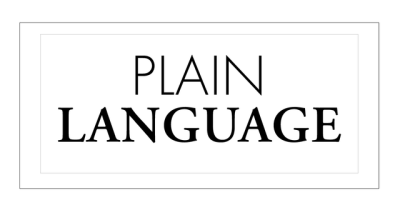
In June 2004, this column emphatically declared a pox on prior to.1 Almost 20 years later, it’s long past time to extend the pox to the ubiquitous pursuant to.2
References
Michèle M. Asprey, Plain Language for Lawyers (Leichhardt, NSW: The Federation Press, 4th ed, 2013), p 183: Pursuant to “is an expression we are so used to that we barely notice we are using it. Yet to most non-lawyers it is one of the hallmarks of legalese. Ordinary people say under if they mean to refer loosely to something . . . . Or, if they are being more specific, they say according to. . . . There is no reason why lawyers cannot do the same.”
Australian Government, Style Manual, https://www.stylemanual. gov.au/writing-and-designing-content/clear-language-and-writing-style/plain-language-and-word-choice: recommends using under.
Peter Butt, The Lawyer’s Style Guide (Oxford, UK: Hart Publishing, 2021), p 658: “Usually, pursuant to is a habitual legalism, meaning simply under or by . . . .” (The author goes on to discuss the term’s potential ambiguity.)
Peter Butt, Modern Legal Drafting (Port Melbourne, Victoria: Cambridge University Press, 3d ed, 2013), p 242: recommends using under.
Bryan A. Garner, The Elements of Legal Style (New York: Oxford University Press, 2d ed, 2002), p 136: “Write under, in accordance with, as required by, in response to, or in carrying out. These are ordinary English words and phrases; pursuant to is pure legalese.”
Bryan A. Garner, Garner's Modern English Usage (New York: Oxford University Press, 5th ed, 2022), p 905: “Pursuant to (= in accordance with; under; in carrying out) is rarely — if ever — useful. Lawyers are the main users of the phrase, and they have used it only since about 1800 — often imprecisely.”
Bryan A. Garner, The Redbook, A Manual on Legal Style (St. Paul: West Academic, 5th ed, 2023), pp 255, 609: “This is one of the worst instances of legalese because it’s the most common.”
“[P]ursuant to can always be replaced with a preposition (under) or a more precise phrase (in accordance with — concededly longer, but universally intelligible in a way that pursuant to is not).”
Joseph Kimble, Seeing Through Legalese (Durham: Carolina Academic Press, 2017), p 5: pursuant to is “hardcore legalese.”
Uniform Laws Commission, Drafting Rules and Style Manual (2023), p 64: recommends using under.